Just for kicks today, I decided to check the fuel levels on my carbs with the bike running as the FSM instructs on the XJ. This spring I had the bank completely apart to replace butterfly shaft seals and ultra sonic cleaning, and all the floats (8) were set at 23 mm / .905 inches. I get the bike set up so the carbs are level front to back and side to side, and set up a fan to cool the motor while I tinker. Here are the instructions per the FSM --
[IMG]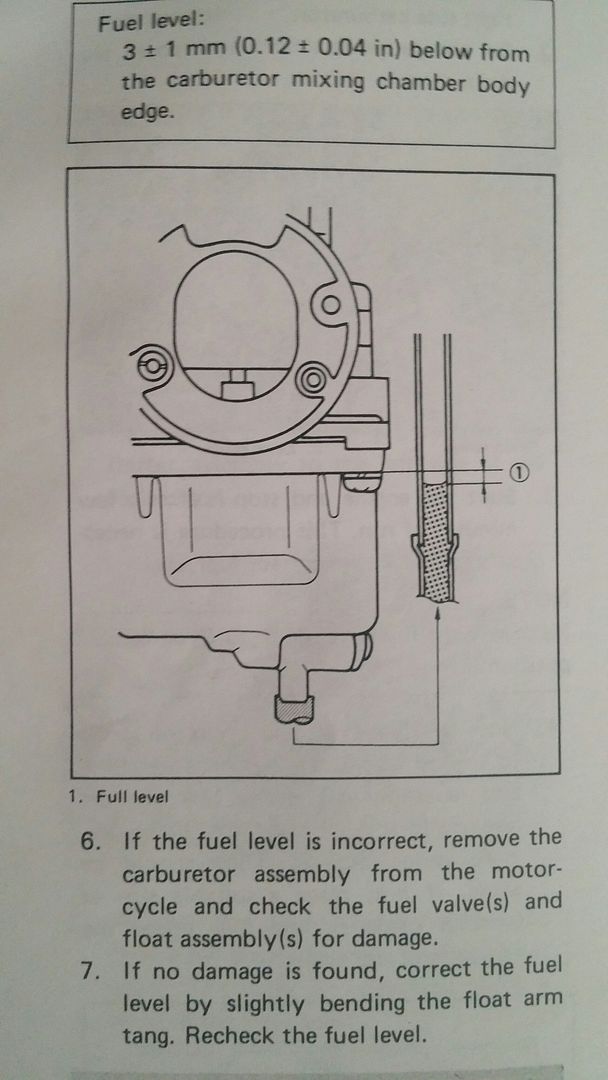 [/IMG]
[/IMG]
So then I put a metric ruler up against the bowl as a point of reference --
[IMG]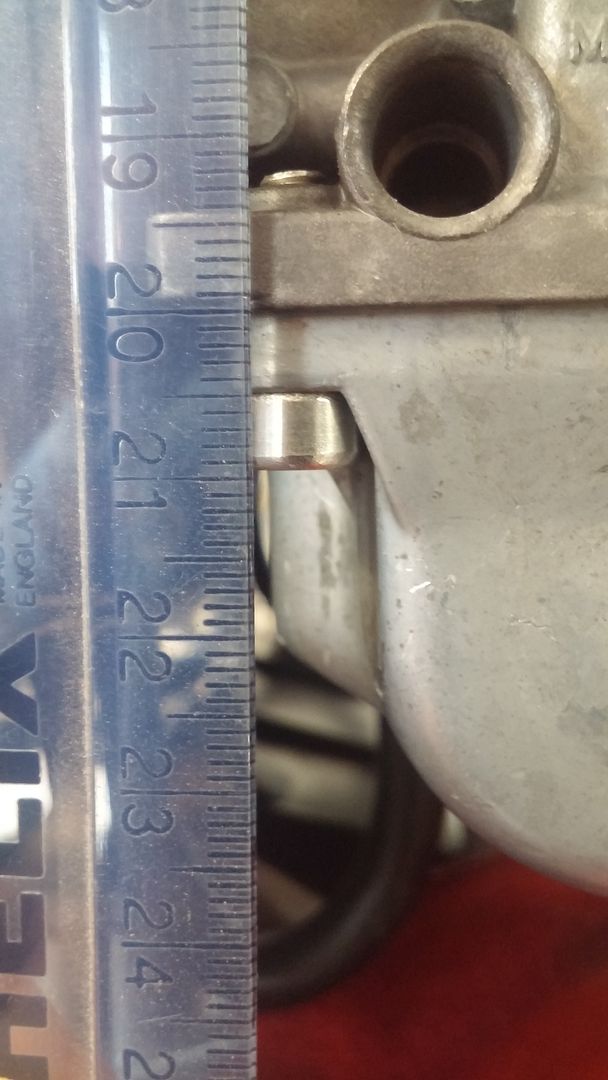 [/IMG]
[/IMG]
What has never been clear to me is that the FSM says fuel level should be:
I interpret "the carburetor mixing body chamber edge" to be at the 20 cm mark on my ruler up next to the carb yet the pic in the FSM clearly shows that point to be at the 20.5 cm mark on the ruler. That's a difference of 5 mm in where the level would be dead nuts on. If it is truly important for all 4 fuel levels to be exact (and the debate rages on ) and you're shooting for 2 mm to 4 mm below the mixing body as your target, then defining the point where the level is perfect is crucial. I'm not trying to reopen the discussion about how critical exactness is to peak performance, I'm just prepping for XSSE and thought why not set things properly. Here are pics of the fuel levels, carb #1 through #4 --
) and you're shooting for 2 mm to 4 mm below the mixing body as your target, then defining the point where the level is perfect is crucial. I'm not trying to reopen the discussion about how critical exactness is to peak performance, I'm just prepping for XSSE and thought why not set things properly. Here are pics of the fuel levels, carb #1 through #4 --
#1 [IMG]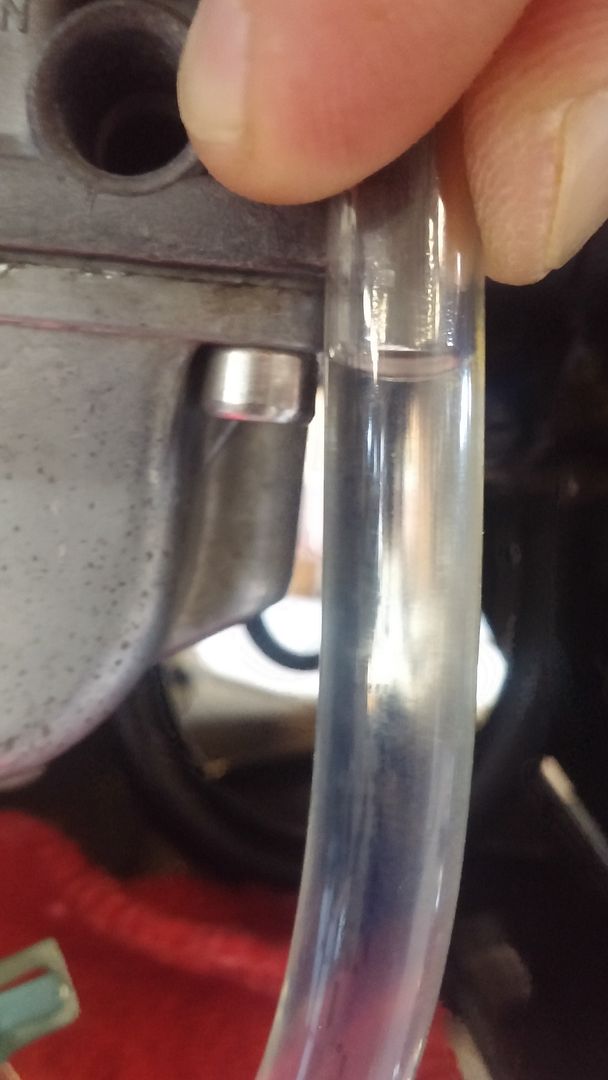 [/IMG]
[/IMG]
#2[IMG]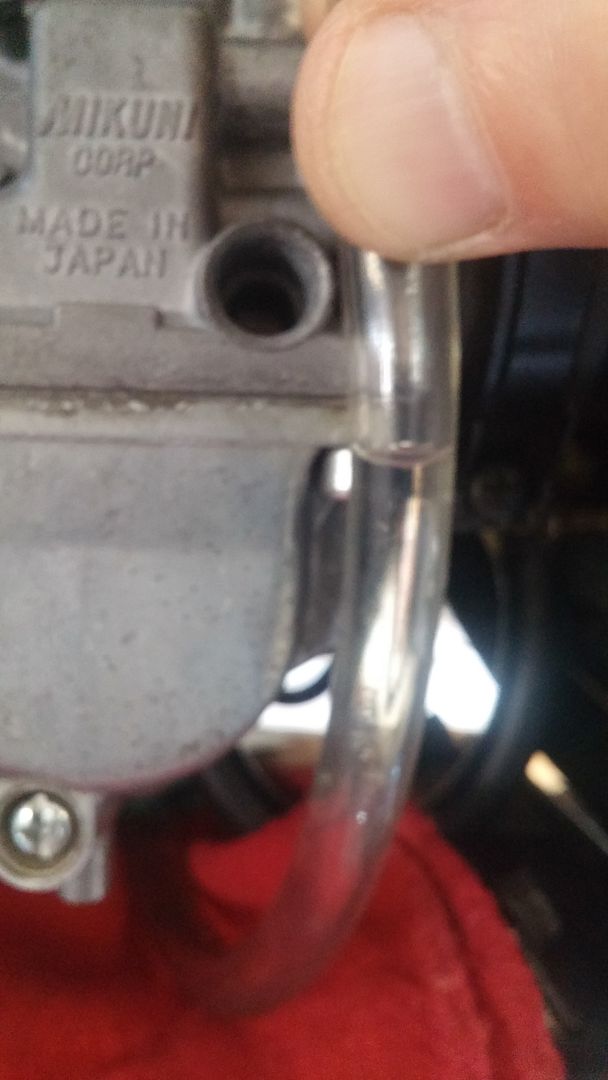 [/IMG]
[/IMG]
#3[IMG]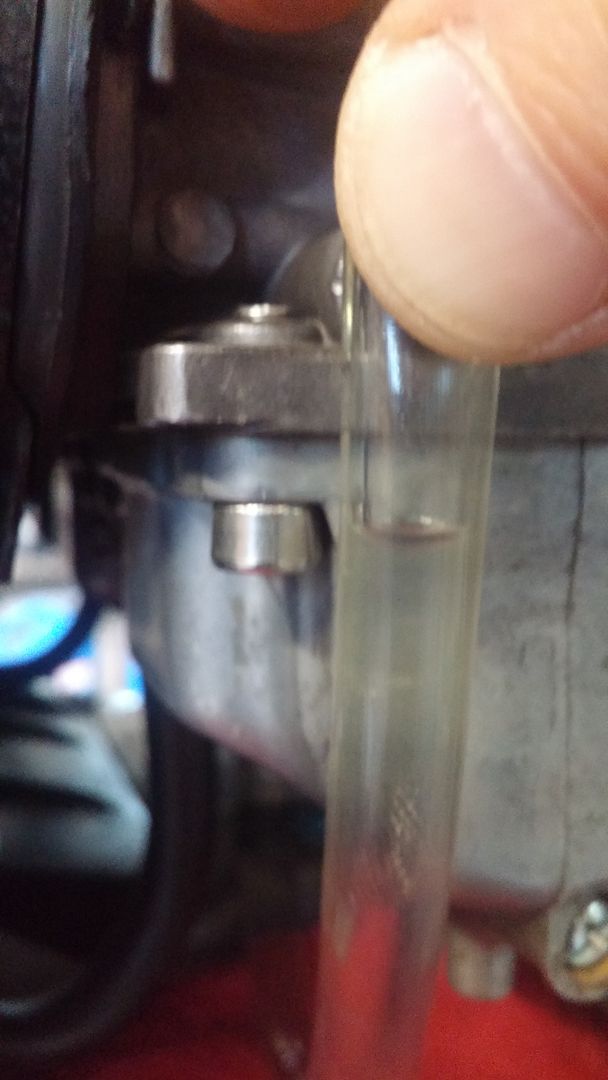 [/IMG]
[/IMG]
#4[IMG]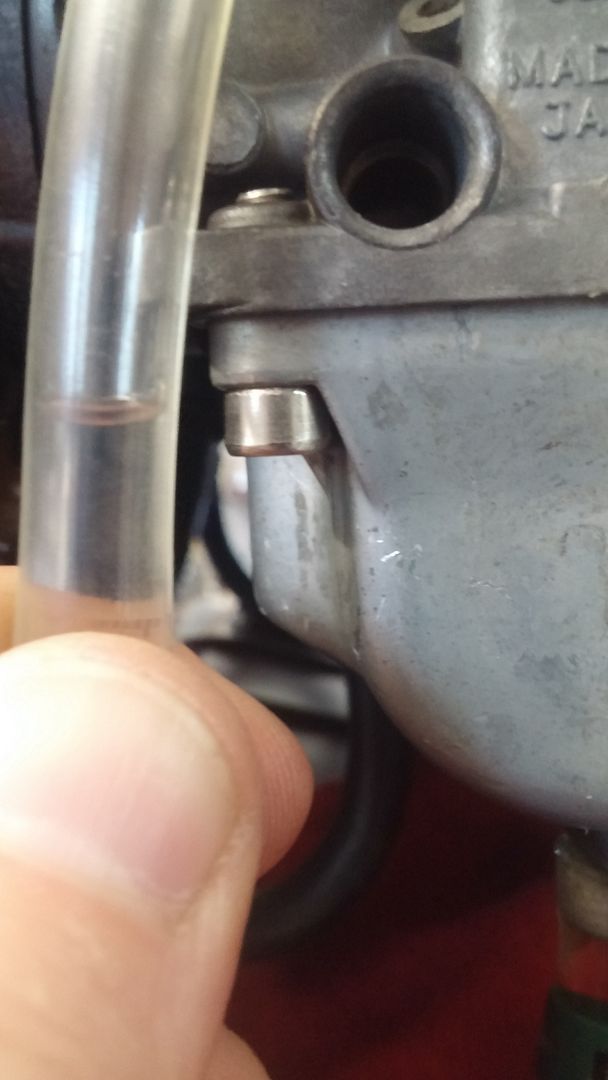 [/IMG]
[/IMG]
So does anybody know without question or doubt whether the perfect, target fuel level would be at the 20.3 cm or 20.8 cm mark on my ruler? I would say my levels on #1 and #2 are at about the 20.6 cm mark and #3 and #4 are at about the 20.7 cm mark. Now that Brant is back on the site I know he'll take a swing at this one , any other carb gurus want to chime in?
, any other carb gurus want to chime in?
Hope you all had a good Labor Day weekend!
[IMG]
 [/IMG]
[/IMG]So then I put a metric ruler up against the bowl as a point of reference --
[IMG]
 [/IMG]
[/IMG]What has never been clear to me is that the FSM says fuel level should be:
3 +/- 1 mm below from the carburetor mixing body chamber edge
 ) and you're shooting for 2 mm to 4 mm below the mixing body as your target, then defining the point where the level is perfect is crucial. I'm not trying to reopen the discussion about how critical exactness is to peak performance, I'm just prepping for XSSE and thought why not set things properly. Here are pics of the fuel levels, carb #1 through #4 --
) and you're shooting for 2 mm to 4 mm below the mixing body as your target, then defining the point where the level is perfect is crucial. I'm not trying to reopen the discussion about how critical exactness is to peak performance, I'm just prepping for XSSE and thought why not set things properly. Here are pics of the fuel levels, carb #1 through #4 --#1 [IMG]
 [/IMG]
[/IMG]#2[IMG]
 [/IMG]
[/IMG]#3[IMG]
 [/IMG]
[/IMG]#4[IMG]
 [/IMG]
[/IMG]So does anybody know without question or doubt whether the perfect, target fuel level would be at the 20.3 cm or 20.8 cm mark on my ruler? I would say my levels on #1 and #2 are at about the 20.6 cm mark and #3 and #4 are at about the 20.7 cm mark. Now that Brant is back on the site I know he'll take a swing at this one
 , any other carb gurus want to chime in?
, any other carb gurus want to chime in?Hope you all had a good Labor Day weekend!



Comment